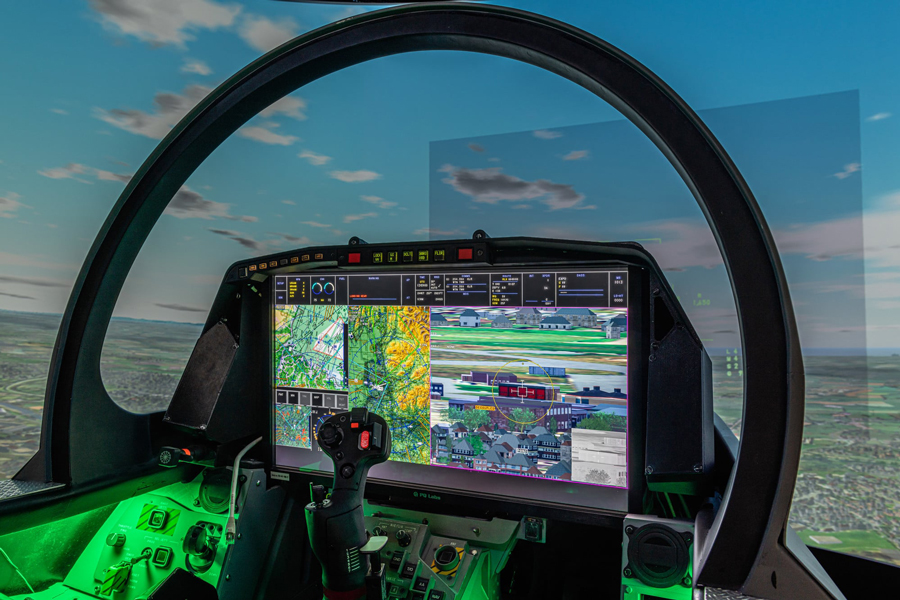Collins Aerospace
Q&A with Paul Dawkins Collins Aerospace - Large Area Display (LAD)
Jack Richardson
28 September 2023
During DSEI 2023, Collins Aerospace announced that it has been awarded a contract by BAE Systems to supply the Eurofighter Typhoon combat aircraft with a Large Area Display (LAD). This comes shortly after the company won a contract with the US Navy to supply it with a new generation of pilot helmets. DPI sat down with Paul Dawkins to find out more.
DPI: Paul, could you tell me about your background and role in the company?
Paul Dawkins: I am the account manager working within our military avionics business, within Collins Aerospace which is part of RTX. I’ve been here eight years and my roles here have been in simulation and training business development and avionics business development.
DPI: can you just give me a short history of the Large Area Display (LAD)?

PD: Back in 2018, BAE Systems ran a competitive tender process that saw Collins Aerospace being selected to provide two experimental LADs.
Since then, another iteration of the tender process has taken place and again, as we have just announced, we have been selected to mature the requirements and the specification for the LAD for future Eurofoghter/Typhoon cockpits.
DPI: what is the importance of LADs in military aircraft and the defence sector today?
PD: The importance really is how the pilot is presented with the mission data, they need a larger display, the height of the display is quite important because then they can project as much information about what’s going on in front of the aircraft, whereas the width is slightly less academic, but they want the maximum width to fill the cockpit. So, in concert with the helmet mounted display, it gives the pilot really good situational awareness. There’ll be secondary displays to manage all of the flight critical information, but predominantly a LAD is something in a combat aeroplane very much there to give the pilot as much mission information as they need to be able to make all the decisions that they want.
DPI: what are the main challenges in developing the LAD?
PD: The main challenge is really finding the size of glass that BAE Systems asked us for, so we have very much gone down the Commercial-off-the-Shelf (COTS) route to keep costs to a minimum. We have also looked at cost components and then we integrate those cost components into a solution.
DPI: what’s the current timeframe for deploying the LAD?
PD: that is to be agreed with BAE Systems, as is the route to production. We are driven by the OEM in terms of getting something into service.
DPI: which other markets are you targeting?
PD: We are looking at other opportunities in the US and also we’re in discussions with FCAS (or SCAF as it’s known in France) as well as GCAP. It’s part of the discussion moving forward in terms of what we can offer in terms of technology to all the major platforms and in terms of technological development.
DPI: in terms of technological development what’s the long term role of the product?
PD: Ultimately, looking at more 3D type image presentation to the pilot and really, we’re driven by what the operational requirements are, and what pilots actually need in terms of information and how we can present that on an LAD.
DPI: thank you very much.
